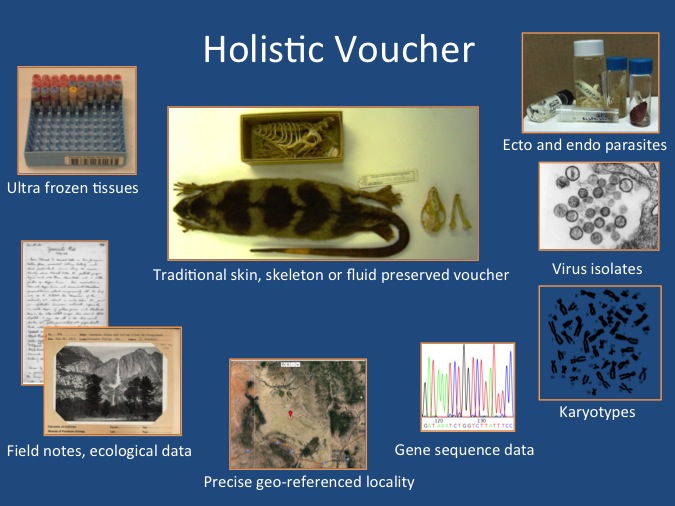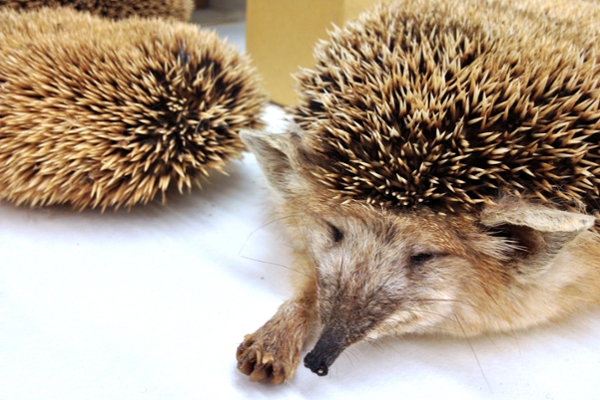Division of Mammals
open weekdays 8am - 5pm
visitors welcome by appointment
information for visitors
phone: (505) 277-1360
fax: (505) 277-1351
museum administrator
open weekdays 8am - 5pm
visitors welcome by appointment
information for visitors
phone: (505) 277-1360
fax: (505) 277-1351
museum administrator
The collection is world-wide in scope (78 countries, all US states) with particularly strong holdings from the Southwestern United States, Beringia, Central Asia, and Latin America.
Taxonomic BreadthRepresentatives from 25 of 27 orders, 108 families, 556 genera, >1,800 species. The majority from the Orders Rodentia (260,000), Chiroptera (28,000), Carnivora (22,000), Eulipotyphla (18,000), and Artiodactyla (8,000).
Temporal RangeThe collection contains specimens dating back to 1890, with the major holdings documenting the rapid environmental change from 1950s on.
 Preparation Types
Preparation Types
Skin, skull, post-cranial skeletal, fluid preserved whole organisms, frozen tissue (heart, kidney, liver, lung, spleen, muscle, blood, ear clips), feces, cell suspensions, karyotype test slides, parasites (endo and ecto).
Type SpecimensThe collection contains 24 holotypes, 65 paratypes, 22 viral symbiotypes and 185 parasite symbiotypes.
FieldnotesThe MSB houses an extensive archive of field journals and catalogues that date to the 1900’s and are associated with specimens held in the collection.
GrowthOur average increase in cataloged specimens is over 5,000 per year.
LoansAnnually we process over 100 loans to researchers worldwide containing approximately 3,000 traditional voucher specimens or tissues.
Publications Citing MSB Mammal SpecimensApproximately 90 peer-reviewed publications or dissertation/theses cite MSB DOM specimens annually.
Educational UseOn average annually, 20 UNM courses and 10 K-12 schools make use of or visit the collections for coursework or presentations/tours.
264,000 specimens from the United States
40,500 specimens from high latitudes
 21,300 specimens from Mexico and Central America
21,300 specimens from Mexico and Central America
Four large collections have been recently integrated into the MSB: